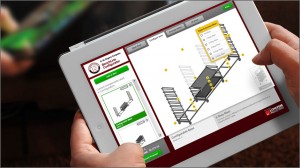 A business operating platform integrates a range of IT components into a single package that scales to meet an organization’s changing needs.
A business operating platform integrates a range of IT components into a single package that scales to meet an organization’s changing needs.
At Lithyem, we place the business operating platform concept at the center of the cloud-based software solutions we develop for customers. The main objective is to streamline the operations of medium-to-large scale enterprises. Our platforms empower customers to meet that goal, reducing costs, saving time and increasing productivity.
Lithyem’s business operating platform consists of software application modules and business process workflows, reinforced with security and backup capabilities. Those components are built upon a 24/7 cloud platform foundation. At the top of this platform stack, an insight and analytics layer gleans actionable information that supports executive decision making.
This approach offers organizations a number of advantages as they look to cut through the complexity of IT. Here are some of the key benefits:
1. A Scalable, More Efficient IT Infrastructure
An expanding business runs the risk of overshooting its IT infrastructure. As sales increase, the temptation is to haphazardly rollout out new systems to accommodate growth. In addition, mid-sized companies — organizations in the $3 million to $10 million revenue range — may lack the management layers necessary to support financial and operational functions. Inefficiency becomes inevitable in such environments and the bottom line suffers as a result. A business operating platform, however, provides a streamlined IT infrastructure that can grow with the company and eliminate the waste of server sprawl.
2. Data Integrity
Double data entry is one consequence of an IT environment that proliferates without governance or adequate controls. This type of redundancy wastes time and, perhaps more critically, leads to unreliable data. A businesses can end up with multiple, conflicting records for the same customer. Data analytics and reporting become untenable as users no longer trust the results.. A company that implements an integrated business operation platform, however, enjoys a unified IT architecture and avoids the pitfalls of double data entry.
3. Smoother Workflow
Poorly integrated IT systems, or a mix of manual and automated processes, result in numerous hand-offs. A company, for example, might run multiple, isolated systems in its order fulfillment operation: standalone point-of-sales, order configuration, order processing and shipping applications. Such an operation would require workers to key in customer and product data multiple times as an order works its way through the hodgepodge of disconnected systems. In contrast, a business operation system makes integration a feature, rather than an afterthought. Instead of settling for a series of awkward transition, a business can achieve an uninterrupted, end-to-end process workflow.
A Lithyem project with a national retailer provides a case in point. For Sears, Lithyem created a visual floor planning tool that lets the company’s stores create seasonal plans, review business rule violations in real-time and have plans approved through a simple hierarchical workflow. The tool has reduced Sears’ seasonal floor planning process from 15 days to 3, saving many thousands of dollars every year.
4. Error Reduction
The same hand-offs that bog down process workflow also introduce errors. Employees keying in data from a paper form or copying and pasting data from one application to another are virtually guaranteed to make mistakes along the way. A business operation platform automates tasks and eliminates the risk of human error.
5. Lower Support Costs
Businesses can enable some integration when they deploy a core enterprise application such as ERP, but even those companies can fall into the trap of fragmented IT. A rapidly growing enterprise may tack on a bevy of third-party systems or customized extensions to keep pace with rising demand. Those additional systems drive up costs. Not only do organizations pay upfront for the new systems, they must maintain and update them over time. A cohesive IT platform, however, provides room to grow and eliminates the cost of supporting numerous bolt-on applications and customizations.
Time for a Change?
Overall, a business operation platform boosts organizational efficiency, which reduces cost and improves margins. This IT approach also results in clean, actionable data and critical business insight. It all adds up to increased profit.
Could your organization benefit from streamlined operations and a comprehensive, integrated IT platform? Leave your comments below.
















